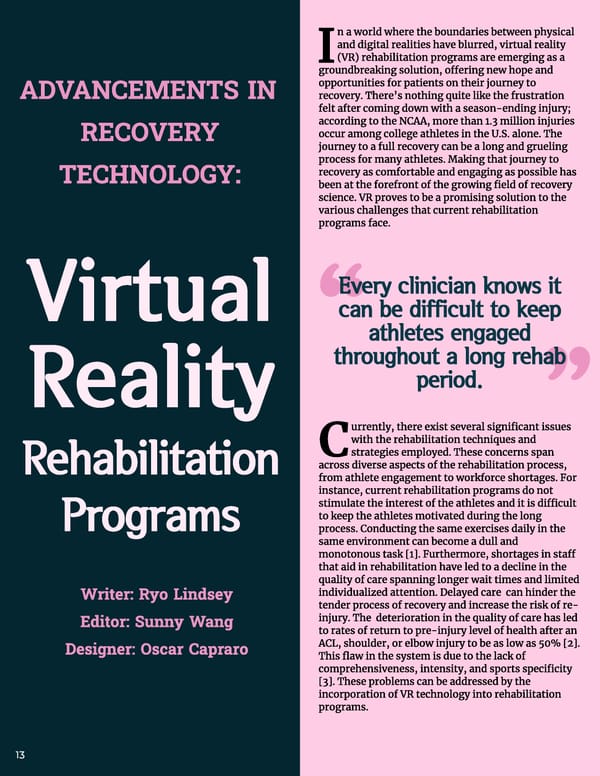n a world where the boundaries between physical and digital realities have blurred, virtual reality (VR) rehabilitation programs are emerging as a I groundbreaking solution, o昀昀ering new hope and opportunities for patients on their journey to Advancements in recovery. There’s nothing quite like the frustration felt after coming down with a season-ending injury; according to the NCAA, more than 1.3 million injuries occur among college athletes in the U.S. alone. The Recover礀 journey to a full recovery can be a long and grueling process for many athletes. Making that journey to recovery as comfortable and engaging as possible has Technology: been at the forefront of the growing 昀椀eld of recovery science. VR proves to be a promising solution to the various challenges that current rehabilitation programs face倀縀 Every clinician knows it can be difficult to keep Virtual athletes engaged “throughout a long rehab period. Realit礀 ⨀ urrently, there exist several signi昀椀cant issues with the rehabilitation techniques and ” strategies employed. These concerns span C across diverse aspects of the rehabilitation process, Rehabilitatio渀 from athlete engagement to workforce shortages. For instance, current rehabilitation programs do not stimulate the interest of the athletes and it is di昀케cult to keep the athletes motivated during the long Programs process. Conducting the same exercises daily in the same environment can become a dull and monotonous task [1]. Furthermore, shortages in sta昀昀 that aid in rehabilitation have led to a decline in the quality of care spanning longer wait times and limited individualized attention. Delayed care can hinder the Writer: Ryo Lindse礀 tender process of recovery and increase the risk of re- injury. The deterioration in the quality of care has led Editor: Sunny Wan最 to rates of return to pre-injury level of health after an ACL, shoulder, or elbow injury to be as low as 50% [2]. Designer: Oscar Capraro This 昀氀aw in the system is due to the lack of comprehensiveness, intensity, and sports speci昀椀city [3]. These problems can be addressed by the incorporation of VR technology into rehabilitation programs.Ḁ븀 13
 Penn Healthcare Review Fall 2023 Journal— Sports Medicine Page 17 Page 19
Penn Healthcare Review Fall 2023 Journal— Sports Medicine Page 17 Page 19